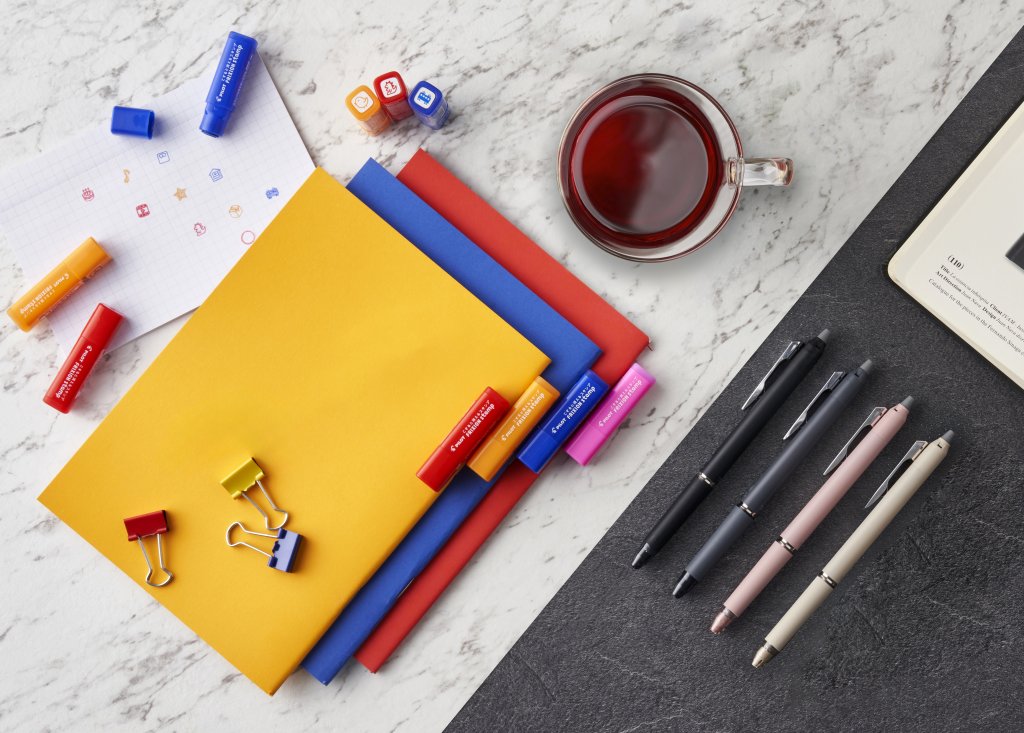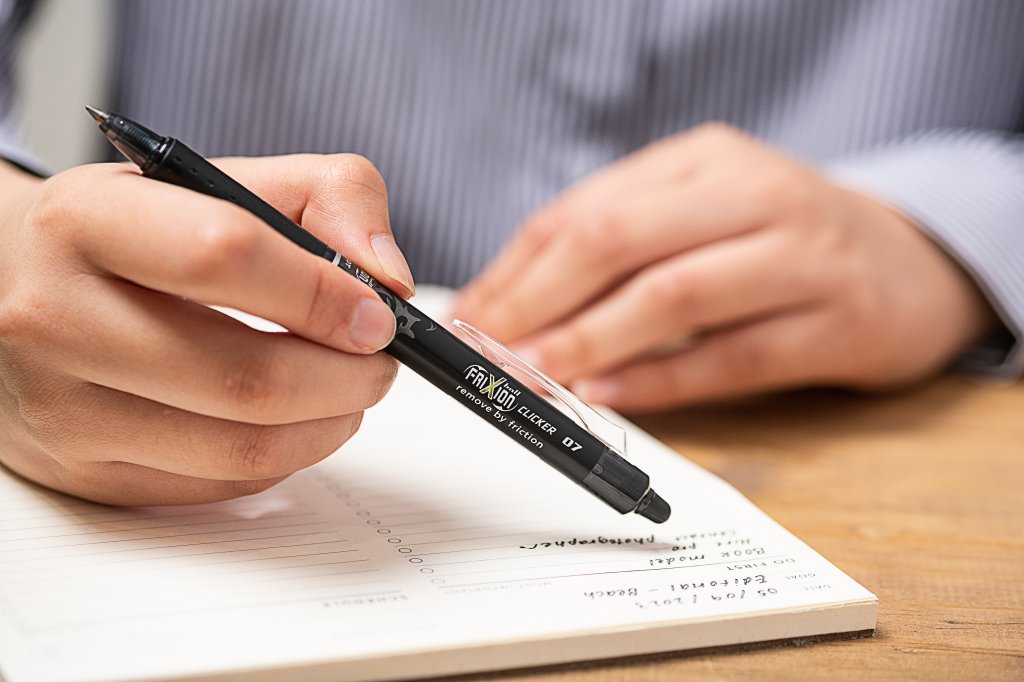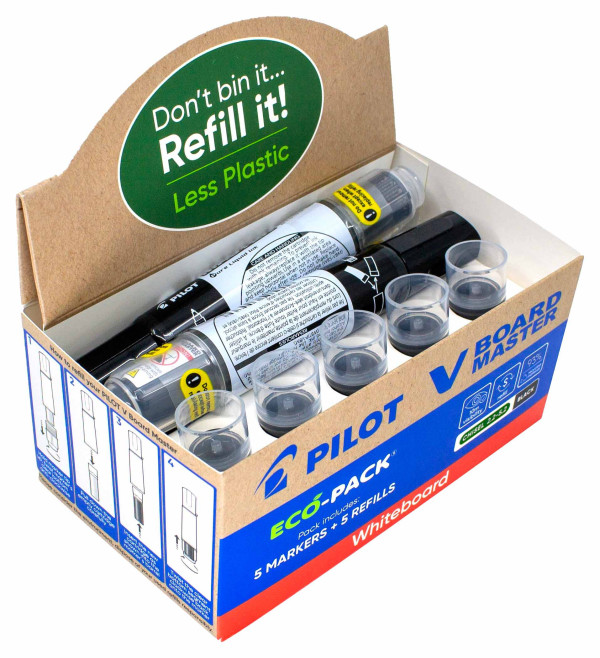The modern workday is often dominated by screens. Virtual meetings, email chains, notifications, and (if you’re an office worker) staring at the computer screen all day as well. So could picking up a pen help cut through the digital noise?
Modern professionals are slowly turning back to handwriting wherever possible and practical, thereby cutting screen time and helping boost focus, clarity, and general well-being. This is brought on by increasing digital fatigue as most of us are stuck to screens for the majority of our day. So let’s explore the symptoms of digital fatigue, how taking and colour-coding notes by hand can boost productivity, and how analogue can reduce the burden of digital fatigue.
Key Takeaways
Digital fatigue, or the overexposure to digital tools, can cause a variety of symptoms and eventually lead to burnout, causing productivity loss.
Switching to writing by hand for some daily tasks can help fight the effects of digital fatigue, while also boosting peace of mind, reducing stress, and may even help to avoid burnout.
Creating a hybrid workflow that uses both digital and analog tools (writing by hand) can actually boost productivity, helping us to get more done in a day without feeling overwhelmed.
Starting small can help to create the habit of using more analog tools in your day. Consider switching smaller tasks, such as morning planning, to handwriting for a start.
Opt for quality writing implements to avoid a bad writing experience, thereby helping to effectively form the new habits of writing by hand.
The Rise of Digital Fatigue Among Professionals
As modern professionals, we’re bound to experience negative effects from the sheer amount of digital products we use at some point. We rarely manage to escape the screens, even when home.
This leads to the condition known as ‘digital fatigue’, also known as screen fatigue or technology fatigue. It’s a condition caused simply by overuse of technology, and your smartphone, computer, and even TV can all contribute. There’s a wide range of symptoms associated with this condition, including:
Eye strain
Headaches
Neck and shoulder pain
Fatigue (and trouble sleeping to boot)
Difficulty concentrating
Memory problems
Irritability and anxiety
Stress and overwhelm
Overall, these symptoms can lead to a significant loss of productivity.
This is also backed by science. Studies have proven that our productivity and well-being can be severely affected by prolonged use of digital tools. Key contributors include cognitive overload and the blurring of work-life boundaries (thank you, smartphones).
What’s more, enterprise surveys by Microsoft and others also reported higher stress with digital communication.
So, could handwriting save us from all of these negative effects common in the modern workplace? At the very least, it can help us mitigate some of the effects and give us greater peace of mind.
Handwriting: A Productivity Tool, Not a Retro Gimmick
There is an increasing number of advocates for the value of handwriting among professionals, and more stories come to light every day. One professional shares his story about combatting digital fatigue with analog tools. By reducing his screen time and embracing pen and paper, the first benefit quickly revealed itself: he felt more in control of his thoughts during meetings. Without an open device alerting him of an influx of emails, he was able to focus and communicate more effectively.
His eyes felt better, and his memory improved. So while studies give us irrefutable proof, stories such as this offer a glimpse into what relief from digital fatigue truly looks like.
It’s not some isolated case, either. We’re seeing this trend gain traction as an increasing number of professionals move away from digital for everything and try to embrace analog tools wherever possible. Examples include note-taking, journaling, mindful writing, and more.
And while most of us would love a clean break from digital tools in our everyday life, we do live in a digital world, so we need to find a workaround that can fit into our lives.
We must do our best to embrace a hybrid workflow in our day-to-day.

The Best of Both Worlds
The core reason digital has become such an excessive part of life is that it is supremely useful. It makes sense, then, to embrace both worlds and set up a hybrid workflow that reaps the key benefits of either system.
For example, digital tools excel at storage, search, and setting reminders. Paper, on the other hand, is great for processing thoughts. It also helps to just take a break from the screen while staying productive.
One way to achieve this duality is to take notes on paper, whether you’re a student or sitting through a meeting at work. If the notes are critical, they can be transferred to a digital format and labelled accordingly, later on. Alternatively, you can use markers to colour-code and organise notes for future reference.
During a team brainstorming session, instead of a projector and a laptop, consider using mind maps on paper. This can always be cleaned up for a digital presentation later. Another idea is to make use of paper for setting up meeting agendas or keeping a calendar the old-fashioned way.
These small shifts and changes can go a long way to limiting screen time somewhat, and also offer some benefits. Opting for paper over screens can:
Offer deeper engagement in meetings
Improve prioritisation with a handy day planner
Reduce screen dependency in case of a power outage or workflow disruption.
All in all, it would be quite a feat to break away from digital altogether. But while we’re chained to our screens for the most part, there’s no reason we can’t optimise dual workflows to increase productivity and, most importantly, work on our own well-being.

How Professionals Use Pen and Paper Today
There are several ways professionals are using handwriting in their day-to-day lives to increase focus and well-being. Here are some we recommend.
The Morning Clarity Ritual
Starting your day with 5-10 minutes of free writing or journaling is a fantastic way to get a start in the re-adoption of analog. This short writing session can go a long way to improving your mental clarity and emotional well-being throughout the day.
Keeping a gratitude journal is another great way to get the ink flowing while promoting personal well-being.
Analog Meeting Notes
Many modern team leads are making the switch to note-taking by hand, swapping the laptop for a notebook. This can help us stay more focused in meetings and avoid distractions from open browser tabs and message pings.
If you work remotely, activate focus mode on your device and keep the pen and paper handy.
Personal Client Touchpoints
If you work with clients, a personal, hand-written note or thank you note can go a long way to adding warmth and memorability to the interaction. It’s all too common today to simply rush out a thank-you email, but the warmer personal touch is grossly underused.
These are just some of the many ways that we can add analog back into our lives and reduce screentime. Whatever ways you choose, you’ll need dependable writing implements that won’t sully the enjoyment of the process.

Writing Tools That Support Flexibility
When making the switch to writing by hand as an everyday habit, you may want to carefully consider your writing implements. A low-quality, scratchy pen could hamper the enjoyment of the writing experience.
And while we’ve all been glued to our screens, the pen market hasn’t ceased to innovate.
Erasable pens such as the FriXion Zone Gel Pen are great for making changes without creating a messy eyesore of a page. Refillable pens are an excellent way to reduce costs and plastic waste.
But most of all, a high-quality pen helps to support a positive, enjoyable writing experience that can help us to form the habit with greater ease, and to stick to it.
With high-quality tools in hand, we can then start to include more analog in our lives.

How to Start Using Pen and Paper
The best way to get started on a lasting change is to start small. Switch just one task to pen and paper in the beginning. This might be your morning planning. Instead of a spreadsheet or productivity app, use pen and paper. You could also take meeting notes or minutes by hand instead of by keyboard.
Throughout the shift, you’ll want to keep your pen and paper within easy reach. Choose a dedicated spot on your desk just for your notebook and pen, and slowly form a habit of grabbing it when you leave your desk.
Having the notebook handy at all times is wise, since you’ll be able to jot down ideas and meeting notes at all times.
Finally, it’s wise to keep some refills handy in case your pen runs dry. From here, slowly transition more tasks, where practical, to handwriting, and you’ll soon reap the benefits mentioned in the studies above.

Conclusion: Writing Beyond the Screen
Making the switch to analog in some form can help you think more clearly, reduce stress, and aid information retention. It’s a bit of a no-brainer to at least give it a try. Even the most digital of workplaces can benefit from some handwriting.
Writing by hand can boost productivity, clear muddy thinking, and overall help us to work smarter and get more done even in fast-paced environments.
To find a pen that matches your needs, browse our wide variety of pens and pencils to explore the available options and find something worth investing in. Our top pick for this purpose is the solid, ergonomic, and refillable FriXion Clicker Erasable Gel pen.
About Author
Stephanie Janolo
At Pilot Pen Australia, she bridges the gap between digital and timeless writing instruments. Beyond the realm of pixels and algorithms, her inspiration strikes in the form of art, museums and lyrical narratives of Taylor Swift.





